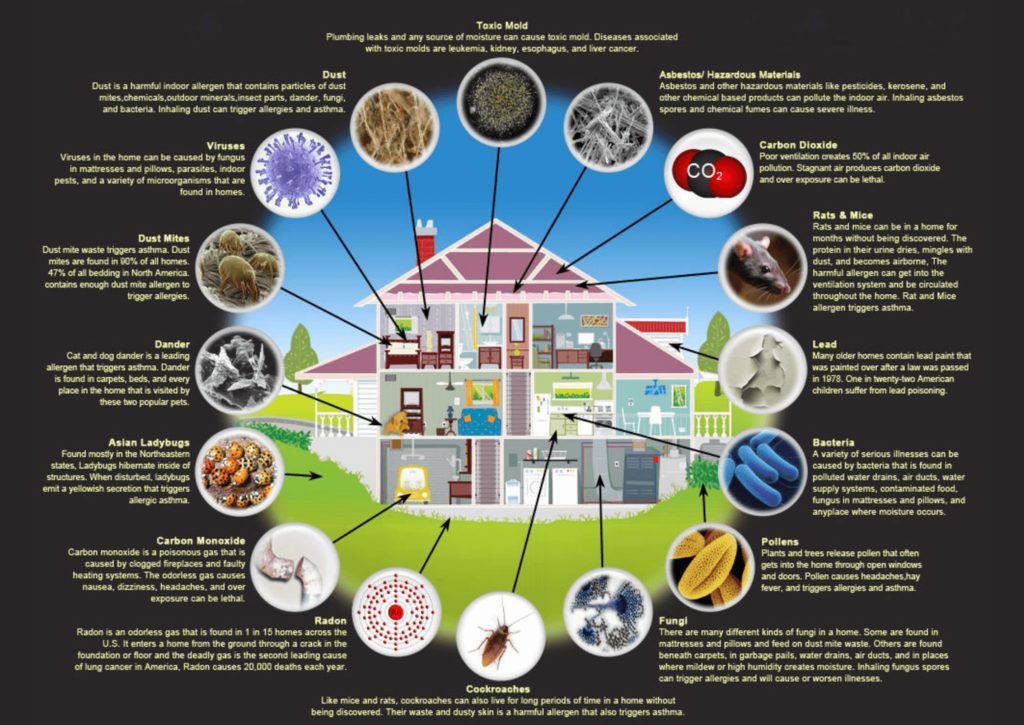I prefer to liken the field of sustainable design for homes as a large tree with many branches, a multitude of twigs, and thousands of leaves. Three of the key branches that our clients find of heightened interest are energy efficiency to reduce the impact of climate change, the design for resiliency in order to survive natural disasters (like fires, flooding, and earthquakes), and the granddaddy of them all: indoor environmental quality. I call this indoor environmental quality rather than simply indoor air quality, as natural light, connection to nature, acoustic control, and thermal control are important considerations for the health and well-being of a home’s occupants. Here are just a few of the twigs on the branch of indoor environmental quality that we take into consideration in the design of our clients’ homes.
- Keep pollutants from entering the home. Use generous mats outside of the doors and maintain a shoeless dwelling.
- Utilize natural ventilation as much as possible. Place operable windows on opposite sides (or diagonal) of each room so that air can flow freely through the space.
- Invest in an HRV. Heat-Recovery Ventilation (HRV) mechanical air delivery systems provide fresh air without consuming much energy and have the added benefit of filtering the air and reducing a home’s humidity level. Our personal residence has an HRV and has been a haven for family members during summer days when smoke from wildfires made breathing difficult.
- Minimize VOCs. Many building products and furniture produce off-gas volatile organic compounds (VOCs) and urea-formaldehyde. We advise our clients to avoid vinyl flooring, sealants, adhesives, and paints that emit potentially harmful chemicals into the air.
- Consider your furniture. For years, furniture has been treated with toxic fire-retardants. Foam padding in sofas, chairs, and baby bedding treated with fire-retardants (TDCPP and Penta DBE) have been found to be a health risk.
- Test your home for radon. Conventional wisdom says it’s not uncommon to find radon levels in homes that have equivalent health ramifications of smoking a pack of cigarettes a day. Notice I use the term conventional wisdom; there is new data that suggests we may be wrong about radon’s impact on our health. Stay tuned for further discussion on this topic.
- Seal your doors. If a garage is connected directly to a home, be sure that the seals around the door between the home and the garage are air-tight. Every home with an attached garage should have a carbon monoxide detector.
- Inventory your cleaning supplies. Eliminate those that have chlorine in them (and always keep them out of reach of children and animals).
- Monitor your air. Install a portable Indoor Environmental Quality (IEQ) monitoring system that can be easily moved from room to room. I use the Awair system that I can easily monitor from my phone for temperature, humidity, CO2, chemicals (like VOCs and urea-formaldehyde), and fine particles in the air like smoke, pollen, or mold.

One of the most creepy sources of indoor pollutants is dust mites. The excrement and carcasses of dust mites are considered one of the major sources of asthma in children. Dust mites live off our shedded skin particles and are found in high concentrations in our bedding, especially pillows. To reduce your health risks associated with these gross critters, I suggest the following:
- Use dust-proof mattress pads and pillowcases.
- Reduce foam, feather, and down pillows and those made from synthetic fibers.
- Toss your pillows in the dryer for 30 minutes on a high-heat setting at least twice a month.
- Avoid the use of carpet as much as possible.
- Clean area rugs often.
- Invest in the best vacuum you can or install a central vacuum system that has a higher suction capacity.

